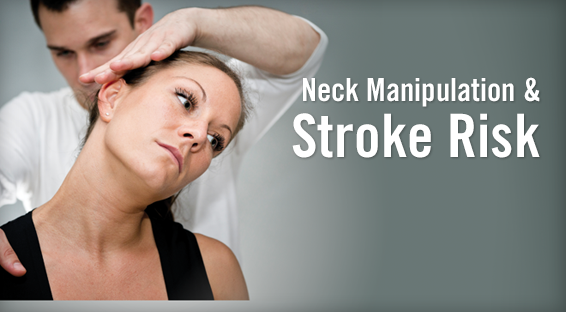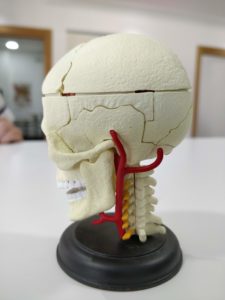
Health Warning – Neck Manipulation and Stroke Risk
One of the most important things I do in the initial consultation is take a full and detailed medical history. Which means finding out everything that has happened to people over the course of their lives and the treatment they’ve received.
I’ll be honest, this can be an emotional process for me let alone my patient recounting it. Sometimes these histories can leave me hooting with laughter but quite a few are deeply upsetting and leave me fuming with anger and terribly sad at the awful treatment people have had to suffer.
A recent example has prompted me to write this article.
What is a stroke?
A stroke happens when blood supply to part of the brain is restricted. The lack of oxygen can cause brain cells to become damaged.
This damage can have a huge range of effects and there can also be a huge variety of causes.
But there is one particular type of stroke called a VBA (Vertebrobasilar Arterial stroke) which can be caused by a Cervical Arterial Dissection (damage to an artery) that I want to talk about
 Anatomy of the neck
Anatomy of the neck
Your Cervical Spine is an amazing construction – through the centre of this small stack of 7 bones runs every nerve and, up each side, your vertebral arteries, part of the blood supply for the brain.
Applying force
This structure is STRONG! Your spinal discs are tougher than car tyres and it’s surrounded by muscle. To make them move you need a LOT of force.
But when you move the strong bone support structure you affect the soft structures it is protecting, like nerves, lymphatic and blood.
With enough force you can temporarily cut off the blood supply.
In laymen’s terms cause a stroke.
Signs of stroke from a vertebral artery dissection include:
- Slurred speech
- Sensory loss, weakness or clumsiness of the arm or leg on one side of the body
- Vertigo or difficulty walking
- Trouble swallowing
- Vomiting
- Neck pain
These can occur within hours or sometime a few days later. You MUST go to hospital immediately.
Managing Risk
Medicine often has side effects but, in my opinion, you need a LOT of benefit to risk death (85% chance in a VBA).
There is currently little research showing that other methods of treatment are not just as effective as manipulation.
Then, thinking of that risk take another little look at the symptoms of a VBA . . . . . See that last one? Neck Pain.
So you might already be at risk and then seek the very treatment most likely to make a bad situation worse!
I urge you not to allow ANYONE to manipulate your neck – regardless of their title. (Chiropractor, Osteopath, Physiotherapist, Doctor, Quiromassaje . . . ).
Research
There are a handful of small studies demonstrating correlation between neck manipulation and VBA.
And lots of hyberpole, often aimed solely at chiropractors (which considering one study names physios, Traumatologists and massage therapists as well seems unfair!)
2 things make research tricky –
- patients are human so they forget or don’t think it’s relevant so don’t give the history
- hospitals often don’t have access to private medical care records and chiropractic, osteopathic, massage and related therapies are often private.
What we do know is that there is a statistically interesting relationship between neck manipulation and stroke risk.
So why take the risk?

T varden
September 2, 2018, 10:08 pm
Interesting article re neck manipulation/stroke risk.Apart from cranial osteopathy and massage how do your osteos solve neck problems? Thanking you
Estelle Mitchell
September 3, 2018, 11:36 am
We are mainly a physiotherapy clinic so don’t have any osteopaths (just cranio sacral).
Therefore we use a wide range of evidence based techniques which don’t include spinal manipulation of the neck. Massage is one of them, there are a wide number of other mobilisation techniques which focus on muscle, myofascial and neuro mobility within manual therapy, there are also a broad range of electrotherapy techniques as well as home management. It depends on what is best suited to the patient, their history and current mobility levels.
Sadly many people believe that massage and spinal manipulation are the only tools available – there is a HUGE range of other physical therapy techniques, both manual and electro, which can be applied depending on the requirements of the patient.